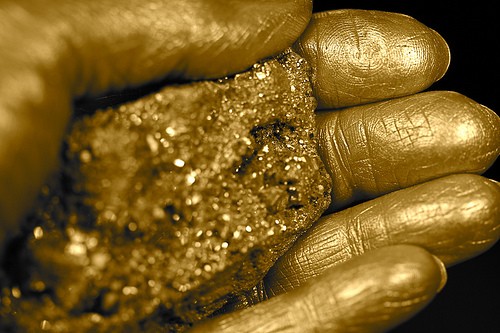A Real Midas Touch
Post on: 8 Июль, 2015 No Comment

Tom Winmill, Portfolio Manager, Midas Fund
With a name like Midas, it should come as no surprise that the fund Tom Winmill runs is bullish on gold. After all, it was mythical King Midas of the ancient Greek city of Phrygia who had the Midas touch, the uncanny ability to turn everything he laid his hand on into gold.
Yet, he is no gold bug, asserts Winmill the moment we settle down to lunch at Papoo’s, a family-owned Italian eatery in the Financial District, and order piping-hot pasta fagioli soup. At least, not a typical gold bug.
Midas is primarily focused on capital appreciation, he says. Gold as an asset does not provide capital appreciation. It provides capital preservation.
Now, however, is an environment in which capital preservation is called for, and Winmill is one of a growing number of financial advisors, fund managers and individual investors around the world who believe that gold will do extremely well over the next several years. But unlike most of those investors, Winmill’s trust in gold is not of recent vintage and was not inspired by the turmoil in financial markets in the final quarter of 2008. Recent market events only confirmed Winmill’s long-standing beliefs. Winmill starts explaining his worldview by pointing to the size of U.S. government debt. The $10 trillion headline figure may be large, but it is manageable since it accounts for around two-thirds of U.S. GDP. But this is only the tip of the debt iceberg. The federal government is much like the Detroit Big Three automakers, whose main problem pushing them into bankruptcy is their unfunded pension and medical liabilities to former employees. The true amount the U.S. government owes, if Social Security and Medicare obligations are taken into account, is around $56 trillion. That’s more like four times the size of the U.S. economy.
Our generation is paying more into the system than the current crop of retirees is taking out, explains Winmill. But that will change when baby boomers begin to retire en masse and present their IOUs to the government.
There are three ways of dealing with the problem. One is to repudiate these obligations; another is to raise taxes. Neither is politically palatable, even though Winmill doesn’t exclude the possibility of substantial tax increases in nearby years. Still, the more likely solution to this problem would be printing more money and running higher inflation while keeping Social Security and Medicare payments fixed. Inflation running at 6 percent to 8 percent annually for several years will reduce the size of government obligations considerably. Winmill doesn’t hazard a guess when the current period of deflation comes to an end, but when it does, he envisions inflation coming back with a vengeance.
Alternative Currency
Unlike other gold bugs, Winmill doesn’t believe gold is a reliable hedge against inflation or a proxy for the prices of base metals and other commodities. For him, gold has one function only, namely as an alternative currency. By itself, inflation is not going to push gold prices higher, he maintains. Nor is his outlook for other metals in any way bullish — including not only base metals but precious metals, as well, even though silver and platinum prices are often expected to move in the same direction as gold prices.
Investment demand is the main factor driving gold prices, since demand from jewelers, the only significant users of gold, is extremely elastic, he explains.
There was a strong increase in investment demand for gold bars in the final months of 2008, Winmill observes, even though we have seen declining inflation and sharp price declines in most commodity markets. This confirms his point that gold is primarily an alternative to the U.S. dollar. Gold prices declined in mid-2008, when the dollar rose across the board, and started to move higher once again at the end of the year, when the greenback recovered from another bout of weakness.
Gold will take off, Winmill concludes, if rising U.S. inflation also weakens the dollar, especially against Asian currencies. Most Asian countries, with the exception of Japan, do not face the same debt problems Americans are facing.
Negative Asset
Gold has an added advantage, as far as Winmill is concerned, because it is not a taxable asset in an environment when taxes may go up. But it is also a negative asset, meaning that owners of physical gold not only do not get any dividends or interest for holding gold but incur an expense for safely storing and insuring gold bars. Gold also suffers from very wide spreads, so that if you buy physical gold from the U.S. government, for example, you are already about 15 percent in a hole. That brings us back to the first assertion by Winmill, namely that Midas’ goal is capital appreciation.

Capital appreciation can be provided by owning shares of gold mining companies, which as he puts it, provide management leverage. Not only is he forecasting gold prices to take off, but well-managed, well-run mining companies will bring in an added layer of returns through their skill in generating cash and profits for investors.
In the past, it seems, a rising tide lifted all boats and a rise in gold prices provided a lift to all gold miners. Not anymore. The operating environment for businesses has become much tougher, and picking successful companies is now both more difficult and more important. Access to financing has become a dividing line between those that will survive and prosper in the future and those that will fail or have to sell out. Successful companies, meanwhile, will have the pick of promising projects worldwide. But companies that are taken over are also of interest, Winmill asserts, and Midas also actively looks for potential acquisition targets.
Not surprisingly, as a fund manager Winmill is skeptical of less labor-intensive investment alternatives, such as gold exchange-traded funds. While that is a cheaper instrument, you generally get what you pay for, he quips. Because prices of shares in the same industry now often go in the opposite directions, he says that some ETFs can show little correlation with the benchmarks they are supposed to track.
A Midas touch is often used as a term of praise, but in the original Greek myth it was more of a curse. Midas could no longer eat or drink, and he eventually begged Dionysus, the god who endowed him with this power, to take it away.
Winmill doesn’t want to focus on gold exclusively. He says that any commodity that can serve as an alternative currency and is not taxed should do well in this environment. He mentions diamonds, but then admits that diamonds are a poor substitute for the dollar.
Why do you need to look for alternatives if gold has served this function so well for many centuries? he asks.
Reprints Discuss this story














